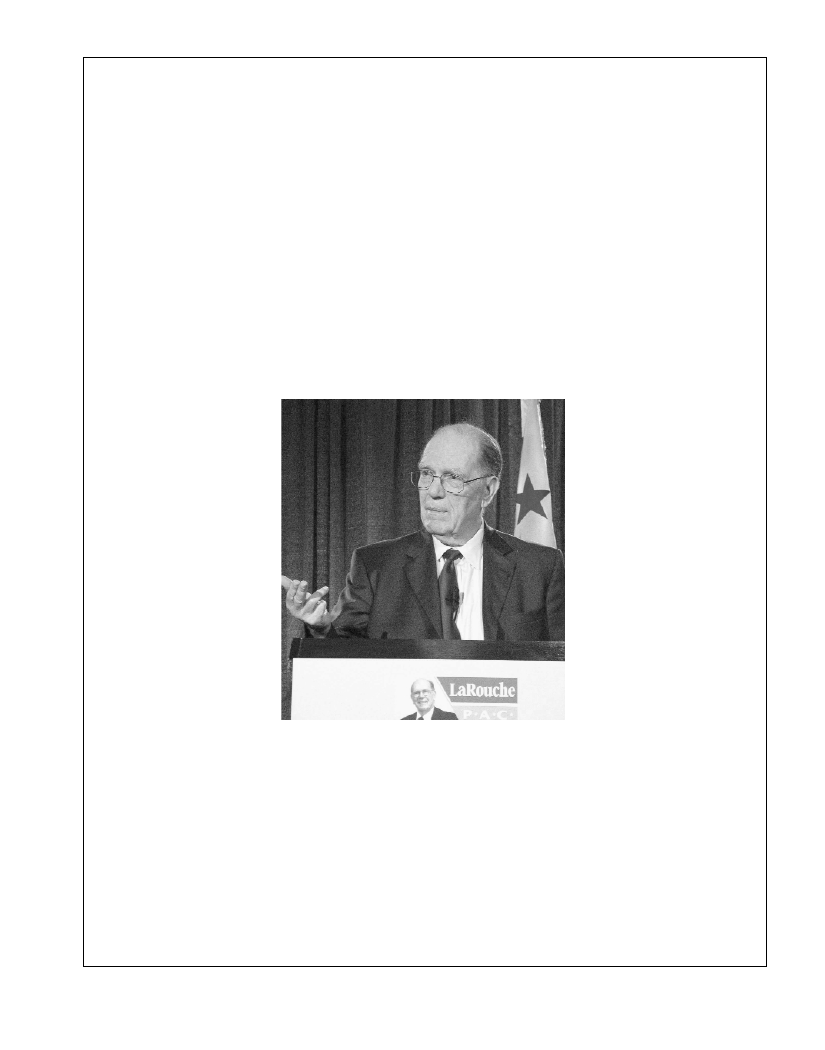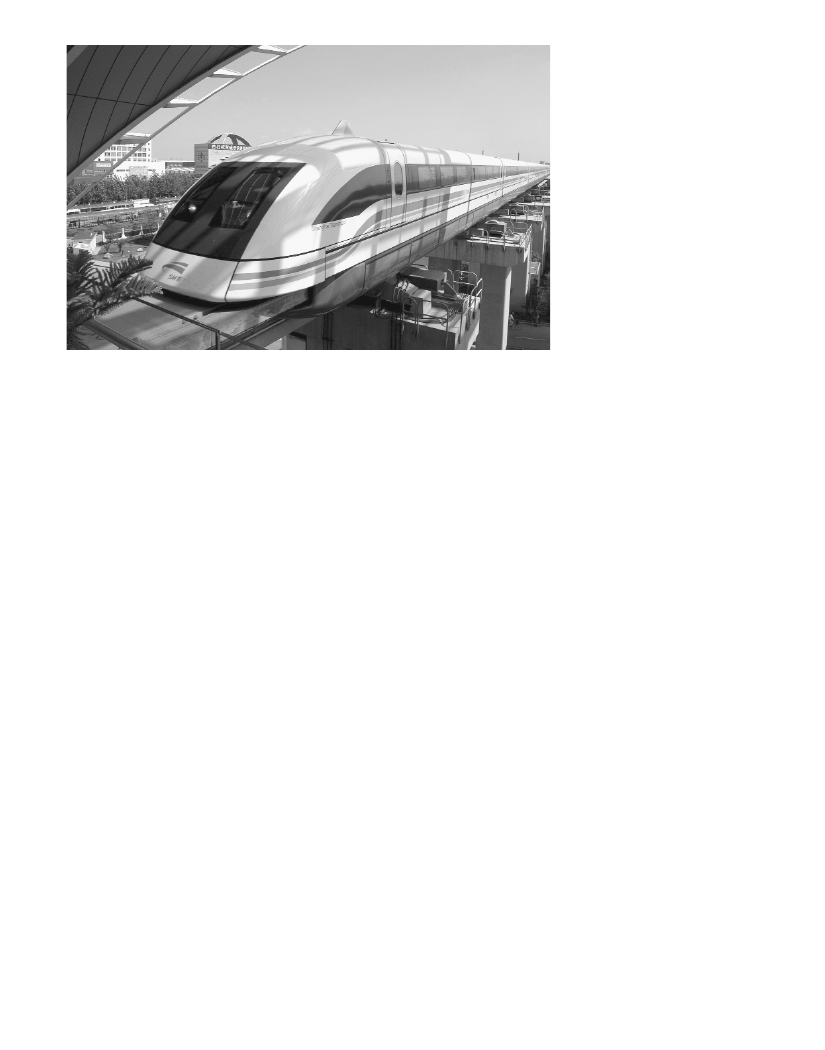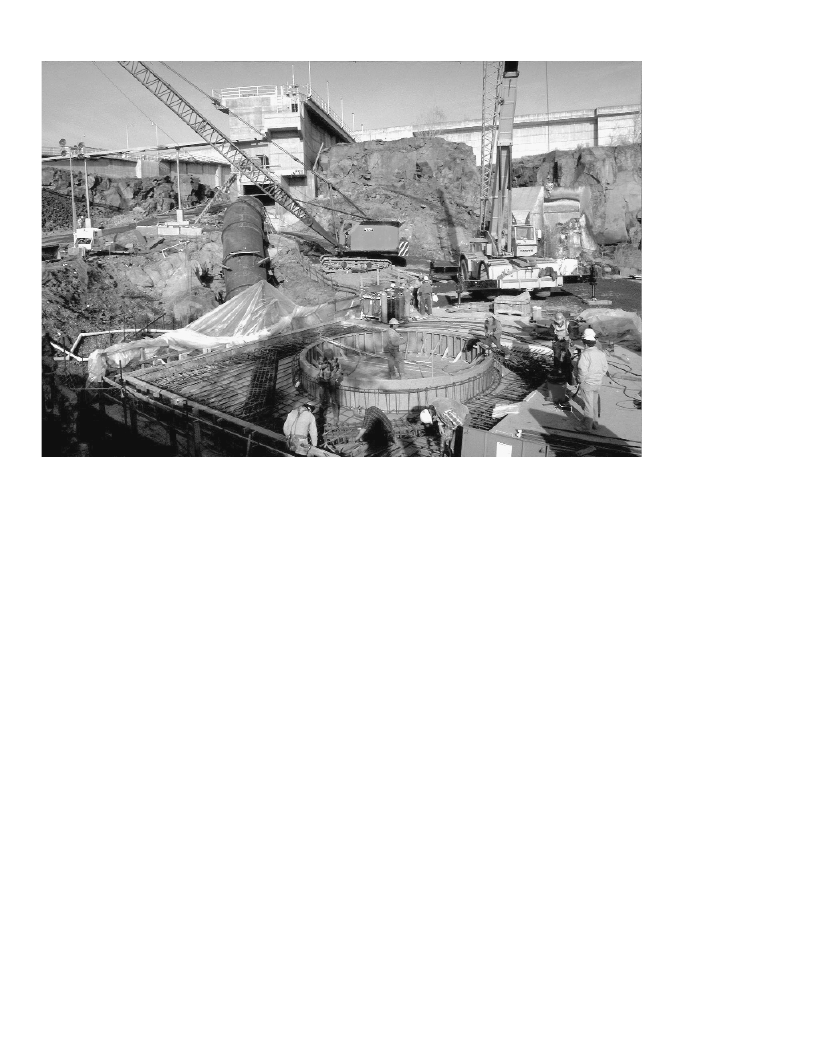Trafikudvalget 2006-07
TRU Alm.del Bilag 361
Offentligt
The U.S.EconomicRecovery ActOf 2006
LaRoucheP#A#C#SuggestedContribution
$
5
LaRoucheP A C###
P.O. Box 6157
Leesburg, Virginia 20178
www.larouchepac.com
The U.S.EconomicRecovery ActOf 2006Includes Lyndon LaRouche’s‘Emergency Legislation, Now!’
COVER: Franklin D. Roosevelt signs TVA legislation, 1933: Library of Congress.� May 2006LLPPA-2006-8
Paid for by the Lyndon LaRouche PAC, P.O. Box 6157, Leesburg, VA 20178.www.larouchepac.com and Not Authorized by Any Candidate or Candidate's Committee
Vacuum in Bush-Cheney Administration:
Crisis Requires EmergencyAction by CongressOn Launching EmergencyEconomic Action Nowby Lyndon H. LaRouche, Jr.May 14, 2006
Aseries of crucial devel-opments around the
to proceed, would haveincalculable effects on pub-lic confidence in the U.S.looming indictment of for-society here at home, andmer White House Deputyabroad.Chief of Staff Karl RoveAt this juncture, myhas created a situation inassociates and I have elab-which Vice Presidentorated a programmaticCheney is now overripeemergency action neededfor emergency impeach-to prevent the collapse ofment proceedings, and thethe U.S. as a modern econ-President himself is expe-omy, through adapting theriencing the onset of aidled capacity of our auto-threatened personal sys-motive industry for urgent-temic crisis. The mere factly needed measures ofof this situation, so fairlyreconstruction of lost anddescribed, creates adisintegrating basic eco-threatened discontinuitynomic infrastructure ofin the functions of theour nation. Action to accel-Federal government, a dis-erate the adoption andcontinuity we can not per-implementation of thatmit to develop under theEIRNS/Stuart Lewisprogram now being pre-presently perilous globalLyndon H. LaRouche, Jr. speaking at a recentpared for Federal legisla-financial-monetary andinternational webcast in Washington.tive action would restorerelated crises.public confidence in our Federal government at aIn such a setting, it is imperative that sensibletime the Presidency itself has the lowest level of stillleaders within the Congress take some appropriatesinking public confidence in its recent history.form of prompt initiative, to restore a sense of faithCleaning the rascals out of the White House andin our Federal government among the relevant insti-Vice President’s office is, unfortunately, an urgentlytutions here, among foreign governments, and ourneeded action, but it is not an uplifting experience.citizenry generally.Action by the Congress which gives our people rea-The pivotal economic and social crisis of theson for confidence in our Federal system, is theU.S.A. at this instant is the implications of anpositive note urgently needed at the perilousonrushing destruction of as much as two-thirds ofmoment of Vice President Cheney’s looming, overduethe U.S. automobile industry. Failure to act immedi-downfall.ately to prevent that catastrophe from being allowed
2
INTRODUCTION
We Must Save Our AutoCapacity Nowhe drive by the LaRouche Political Action Committee(LPAC) to pass Congressional legislation to save theAmerican auto industry from shutdown, is Congress’schance to stop the globalization wrecking ball before itcompletely destroys the United States’ remaining industri-al power. LaRouche put his movement on “war-room”mobilization May 1, with a report that more than 65 majorauto-sector plants, with over 75 million square feet ofmachine-tool capacity, were being shut down this year andnext.“What is needed, therefore, is the creation of a FederalPublic Corporation, by Act of Congress. This action shouldadopt the elements of the automotive industry which arebeing discarded by the automobile corporations, andwhich fit the characteristics which I have identified,”LaRouche wrote in his May 2 message to “economists, leg-islators, and labor leaders.”The objective of the mobilization: to activate con-stituency demand and push Congress to intervene to“retool” the 50% or more unutilized capacity of the autoindustry for production of new national infrastructure,particularly high-speed rail corridors and new electricitygrids centered on nuclear power.The pamphlet you have in your hands is the vital pieceof ammunition you need in order to join this mobilization,a mobilization that will determine whether our nation, andthe world, turn onto a course of prosperity, or descendinto a New Dark Age.
T
The Emergency Actions“They’re outsourcing this nation to death,” LaRouchesaid on May 9, referring to the bankrupt internationalfinancial circles and banks controlling the biggest industri-al corporations. “Globalization is destroying us. We’re los-ing all of our machine-tool capabilities and ability to pro-duce industrial infrastructure. Let auto be dismantled, andthe United States becomes a Third World economic coun-try. Let’s end this crap!”Unless LaRouche’s action is taken—and leads to newmonetary reforms fostering Federal production credits andclamping down on speculation—a global financial crashwill strike by October at the latest. Speculativehyperinfla-
tion,centered on the wildly expanding bubble in theworld’s primary commodities markets this year, showswhere the “Greenspan era” of financial bubbles is going toend, and fast.LaRouche’s bold outline to lawmakers and unionists,“Emergency Legislation, Now!” is already on the desks ofCongress and under serious consideration by half a dozenCongressmen. On May 9 and 10, the Vermont and RhodeIsland Houses of Representatives weighed in with memori-als to Congress asking for the “retooling” legislation, join-ing Alabama, and a number of city councils in hard-hitauto areas, which had already done acted on such memo-rials. A DVD documentary produced by LPAC—“Auto andWorld Economic Recovery”—on how to produce newinfrastructure with unutilized auto-plant capacity, is beingwatched and circulated in Democratic organizations, citycouncils, unions, and on Capitol Hill.Some Members of Congress see the protection andretooling of the shrinking auto industry, as LaRouchedoes, as the core of a package of urgently necessary legisla-tion to rescue the U.S. industrial economy, and theGeneral Welfare of America’s people. This includes, forexample, an increase and reform of the armed forces’structure around a much larger and more capable ArmyCorps of Engineers for “nation-building at home”; legisla-tion funding specific parts of a new national infrastructurelike high-speed rail and new river-navigation systems;national Medicare-modelled universal health insurancelegislation sponsored by Rep. John Conyers of Michigan;and bankruptcy reform legislation to block corporationsfrom blatant “globalization by bankruptcy” swindles.
The Machine-Tool PrincipleMany interviews with unionists and engineers in autofacilities around the country, by EIR staff, make clearthose employees’ conviction that the underutilized autoindustry, with its extraordinary density of machine tools,“can build anything,” and is capable of retooling rapidlyon specific plants for railroad stock, for lock-and-damconstruction, for elements of power plants, and so forth.But these machine tools are being put in storage, trans-ported to outsourced auto production in Mexico or3
China, and even auctioned off cheap on websites, as thehighly skilled machine-tool workforce is losing itsemployment.The shutdowns will cost 75,000 skilled industrial jobsdirectly; and through immediate radiating effects on small-er supply plants and machine-tool shops, 300,000 more.What is about to be shut represents, in automobile-indus-try terms, the capacity to build 2.5 million or more carsand light trucks a year. But in terms of urgent nationaleconomic investment, it represents a unique industrialcapability to build “a new national infrastructure” of trans-portation, power, and more.And this is not the full measure of unutilized, “lost”capacity which could be restored. Since about 1985, fivejobs have disappeared for every one which remains in atypical auto parts or supply plant; and two jobs have gonefor every one that remains in a typical assembly or engineplant.The tool-and-die centers of the auto sector are the coreof its industrial creativity—“new-build” as some arecalled—where the machines and forms used by the rest ofthe industry are designed and built. They are alreadyrazor-thin lines of skills and capacity, in grave danger ofdisappearing entirely, outsourced to Asia.Typical tool-and-die and metal shops are losing 50% ormore of their workers. General Motors has five tool-and-die centers: the Mansfield Metal Center in Ohio; theMarion Metal Center in Indiana; Flint Tool and Die,Pontiac Metal Center, and Grand Rapids Metal Center, allin Michigan. Three of the five are being idled. Theiremployment—which makes possible the work of all100,000 GM production employees nationwide—is fallingthis year from about 1,600 to just 1,275 workers now, andlikely to 750 tool-and-die workers by July.The clear threat now exists, that this creative core of thewhole industry will completely disappear in the near term,with tooling completely outsourced to (typically) India,China, and Korea, and to small U.S. machine shops whichoften have to partner by computer with Indian or Chinesecorporate operations. The loss to U.S. national industrialcapabilities would be immense, all out of proportion to thenumbers of employees involved. This is doubly dangerousbecause nearly the same degree of loss of machine toolingand product control by outsourcing, is occurring in theU.S. aerospace sector, the other remaining American fountof machine-tool capability, which has shrunk even fasterthan auto.
Saving OurselvesIn a radio interview on May 11, with a station in theauto city of Lockport, New York, LaRouche summarizedthe task this way:“So we have the possibility of saving ourselves. And theUnited States is the nation which has—in our traditionsand our legacy, we have the ability to deal with these prob-lems. So, what we’re doing is to say: Let the Federal gov-ernment adopt responsibility for keeping these plantsfunctioning; accept the fact that they’re not going to beproducing automobiles. Take the section that isnotgoingto be producing automobiles, and use it for other things,with a heavy emphasis on restoring the machine-tool-design capability. Build systems for locks and dams for theriver system; build power plants; build railway systems;build other basic economic infrastructure that’s needed inthe states, the communities and so forth, and the nation asa whole.“In addition to the labor force, build up six divisions, ofmilitary Corps of Engineers divisions: Because, if you’regoing to build these things, like assemblies for locks onrivers and things like that that you’re acquainted with inLockport, you’re going to have to have the labor to installthem. . . .“. . . We’re going to make a change in the world. We’regoing to have to go to high technology that we’re not usingnow. The United States and Western Europe, and Europein general, will have to become leaders in this. So, we’regoing to think about, not trying to maintain the standardof living, we’re trying to maintain the condition of the envi-ronment; we’re trying to have a clean, safe environment;we’re trying to have a higher standard of living; we wantprogress in health care. We want people to live longer andto live better. So therefore, that means we’re going to bespending more effort on those kinds of things. Therefore,to do that, we must increase per-capita physical productiv-ity: That means science and technology.“. . . Our Constitution gives us the best, as Rooseveltshowed: When we use our Constitution as a structure fordetermining the way our economy works, as Roosevelt didin pulling us out back of the mess we were in in 1933,when we do that, we have the greatest potential in terms ofour system, for rapid improvement in economic perfor-mance. That’s there. We could become, in a generation,within 25 years, we could become again, the greatest econ-omy in the world.”—Paul GallagherMay 13, 2006
4
For Economists, Legislators, and Labor
EmergencyLegislation, Now!by Lyndon H. LaRouche, Jr.May 2, 2006
T
he purpose of the following communication is toprompt the immediate crafting of urgently need-ed emergency Federal legislation: Legislation toprevent the threatened immediate collapse of the U.S.national automobile industry from becoming the begin-ning of a virtually irreversible chain-reaction ofdestruction of approximately the entirety of the presentphysical economy of the U.S.A.This communication has two sets of elements.The first part, which is presented immediatelybelow, is the proposal which summarizes the nature ofthe proposed emergency legislation.The second part, the attached documentation, is asample of the relevant facts assembled in raw form fromdiscussions and related researches compiled, to date,since a meeting of automobile industry figures and oth-ers convened in Washington, D.C. during the evening ofApril 27, 2006.Much work needs to be done, urgently, to refine thekinds of data identified in the appended, second por-tion of this transmission. The purpose of presentingthat latter collation here, is to sketch the general pro-portions and characteristics of the challenge to be metif our nation is to meet the challenge of this nationalemergency. Despite the need for refinement respectingdetails, the legislative intention required for this crisisis already clear as a matter of principle.
The Policy1. The Threat To Be DefeatedFor a little less than two generations, about forty-twoyears, the presently leading circles of government and pri-vate enterprise in our national economy have been per-suaded to adopt the delusion that a so-called “post-industri-al” orientation for our nation’s economy is both an avail-able, and even an inevitable long-term option. Under influ-ence of what has been this increasingly popular delusion,the independent agriculture, manufacturing, health-caresystems, and our republic’s basic economic infrastructure
generally, have been collapsing, per capita and per squarekilometer, throughout virtually all of our national territory.The best illustration of these effects is the case of whathad been the Midwest heartland on which our victory inWorld War II had largely depended. We are now faced withthe presently accelerating, cumulative collapse of the onceeminently powerful agro-industrial potential, per capitaand per square kilometer, of an area including the westernportions of the states of New York and Pennsylvania, andthe entire states of Ohio, Michigan, and Indiana. Thisregion is otherwise identified as including the heart of theU.S. national automotive industry.Over these recent decades, as the leadership of our econ-omy shifted into the hands of the white-collar generation ofthe so-called “68ers,” the emerging leadership of our econo-my, including the leaders in the institutions of government,became accustomed to the spectrum of special ideologiesassociated with “post-industrial society,” “outsourcing,”and “globalization.” As a result of this cultural-paradigm-shift over the intervening decades, most of the people whohave come to occupy relevant positions of leadership inindustry and government, lack any instinctive appreciationof the effect of a collapse of the U.S. automotive manufac-turing industry as now combined with the currently accel-erating, hyperinflationary rocketing of the prices of prima-ry materials globally.This pattern is illustrated by the contrast between thestrong political reaction to the obvious impact of soaringpetroleum prices, and the contrasting, more or less negli-gent reaction to the even more rapidly accelerating hyper-inflation in other categories of primary materials. Thus,whereas our more kindly souls among those in leadingpositions of power and influence, are concerned with theneed for measures to ameliorate the effects of sudden massunemployment and pension cancellations in the five-stateregion to which I have pointed here, and relevant otherlocations, they have shown virtually no grasp of the threatof being very continued existence of our nation in the com-bined effects of an early disintegration of the U.S.-ownednational automotive industry and the currently hyperbolic5
rate of global hyperinflation in prices of pri-mary materials.In other words, the ideology which cameto the surface as the “post-industrial” outlookamong the university-bred “68ers,” produceda politically influential generation of today,which has become conditioned to think ofeconomy in terms of money as such, ratherthan in terms of the production and distribu-tion of the essential products on whichhuman life depends for its physical perpetua-tion. In these layers, there is virtually nocomprehension of the actual role of techno-logical progress as such in the process ofdesign and production of the physical meansof human existence.Usually, influential circles in these indicat-ed strata of leading influence, have rarelyexhibited a comprehension of those featuresof our economy which defend us against anU.S. Army Corps of Engineersincreasing threat of being thrown back now,Some auto facilities can produce the structural elements for the infrastructuresuddenly, into something which would becritically needed all over the upper Mississippi, Ohio, and Missouri Riverconsidered by most people, as being dumpedsystems. Here, construction under way (on the Ohio at Louisville) of a modern,virtually into a relatively stone-age existence.1,200-foot lock chamber and gates (center) to replace the aged, undersizedIt is not understood that, in light of theexisting lock (right). U.S. Army Corps capacity and funding are lacking: Thisdegree of concentration of the entireproject was delayed so long, the old lock cracked and closed the river.machine-tool-design capability in the aircraftand automobile industries, the immediately threatened col-with the plants, into two major categories: those associatedlapse of Ford, General Motors, et al., would mean a threat-with production of the product issued from such premises,ened collapse in the direction of what would suggestand those associated with the design of the product and“stone-age” conditions for nearly us all.machine-tools on which the required quality of productionThe object of appropriate forms of Federal legislationby the larger portion of the labor-force depends. It is thenow, should be to prevent such a colossal national tragedy,combination of these two interdependent components ofwhile we still have a true national automotive industry tothe productive labor-force which will be required for thedefend.urgent missions indicated in this report. It is that two-faceted feature of those combined, assorted places of2. The Urgent First Stepemployment, which ought to occupy the center of the atten-tion to these matters by the U.S. Congress and others.As the appended facts illustrate, the U.S. is now facedAs Walter Reuther and others emphasized at the vergewith the apparent inevitability of the more or less immedi-of the war against Adolf Hitler, these plants can produceate junking of a majority of the productive capacity of themany other things of national importance besides automo-present roster of U.S. national capacity for the productionbiles. Railroad systems, power plants, essential elementsof automobiles and related elements.for rebuilding the port and inland-waterway systems, areApart from the physical facilities of the relevant, threat-only typical of the work for which these industries are asened plants, these plants represent not only a current, butwell suited as production of automobiles as such.also a much larger labor-force, representing those eitherFrom our national experience of the past, including thenow, or recently associated with production in these plants.important example of the Kennedy Moon-Landing mission’sThese plants represent not only employment of the labornet benefit to our national economy, we know that the kindsassociated with production there; entire communities,of projects needed for repair of our currently decadent, andincluding many business organizations, hospitals, schools,other collapsing national basic economic infrastructure, inand so forth, depend upon those plants’ continued opera-water, power, mass-transit, and other essentials, are besttion for their life. Taking the list of what are known to besuited to the work to be done by government at the Federal,the immediately threatened plants already identified in thestate, and local level. The inevitable employment of privateattachment to this report, we must recognize that a largecontractors in furthering the success of these governmentpart of the entirety of the indicated, five-state, core areaprojects in public infrastructure, is the natural stimulant,depends as a whole on the contributing part these plantsunder our constitutional system of government, for the pro-have represented.motion of rapid recovery in the private sector.In considering the options for employment of the sec-As we should have learned from the way in which thetions of the labor-force associated with those listed plants,Reconstruction Finance Corporation operated underwe should divide the principal body of operatives associated6
President Franklin Roosevelt, when labor employed in suchpublic works is employed efficiently, the increase in the netincome of the nation per capita and per square kilometer isgreater, per annum, than the rate of annual amortization ofthe investment.For example: The continued increase of the average pro-ductive power of labor in the U.S. from the beginning ofrecovery measures launched under Harry Hopkins’ mis-sion, until the 1964 beginning of the official U.S. war inIndo-China, was a period of the highest rate of net physicalgrowth during the Twentieth Century as a whole, and thegreatest rate of improvement of the U.S. standard of living.The net gain to the nation as a whole, from publiclysponsored programs such as the Tennessee Valley projectand the space program, is not measured in profit as privateentrepreneurship is usually measured, but, rather in the netphysical gain to national or regional productivity as awhole from the installation of relevant public works.However, especially since the 1977 advent of deregula-tion, the net physical income of the lower eighty percentileof our population has been consistently declining overabout three decades; the current, net effect of that cumula-tive decline, is now imminently catastrophic. When theunpaid costs of production represented by neglected basiceconomic infrastructure are taken into account, for most ofour population, the years since 1977 have been a frighteningsaga of decline toward the brink of what is presently athreatened global economic breakdown-crisis for sometimein the relatively near future. The cumulative physical effectsshow that the official arguments which deny such physicalreality of recent U.S. economic history, are simply a reflec-tion of wildly fraudulent, willful, and often hysterical formsof so-called “marginal-utilitarian” miscalculations of therate of inflation, over about a quarter-century to date.What is needed, therefore, is the creation of a FederalPublic Corporation, by Act of Congress. This action shouldadopt the elements of the automotive industry which arebeing discarded by the automobile corporations, and whichfit the characteristics which I have identified broadly in thispresent report.
3. The Superiority of the U.S. SystemThe ability of the U.S. Federal government to launch ageneral economic recovery of this type, for the sectors andalso the whole of the U.S. economy, is implicitly defined, asa matter of principle of government, in Treasury SecretaryAlexander Hamilton’s Reports to the U.S. Congress.That, our nation’s constitutional system, reflects ourfounders’ attention to the lessons of the practice of the pre-1689 Massachusetts Bay Colony and the proposals respect-ing paper money by Benjamin Franklin.Our constitutional form of government and economy,unlike the typical economies of Europe, defines a credit-sys-tem, rather than a European style of monetary system. Thisis expressed by the monopoly over the utterance of and regu-lation of the circulation of money created by the Federal gov-ernment. This contrasts with the typical European govern-ment, whose economic policies are subject to control bymonetary systems which are dominated by private, often
also predatory financier interests which have been expressedas central banking systems. Under our Constitution, ourbanking system is subject to regulation by the Federal gov-ernment through those instrumentalities of national bankingwhich rely on the lawful monetary credit created by theFederal government, rather than the inferior mechanismsassociated with the prevalent practice of European states.The issue and circulation of our republic’s lawful moneyserves us not only to promote the circulation of commodi-ties, but as credit invested in the creation and maintenanceof long-term capital improvements in both the public andprivate sectors.For example, the most important categories of invest-ment have a physical life-span of between one and two gen-erations, a span of longer than approximately twenty-fiveto fifty years. The Tennessee Valley development is a usefulillustration of the point. Or, as post-war Germany’s emula-tion of our President Roosevelt’s investment of public cred-it in promoting both public infrastructure and privateentrepreneurship illustrates, the growth of the economy asa whole is accelerated not only by the initial outlay of pub-lic credit, but, additionally, by the circulation of progressivechunks of repayments which serve as additional increase ofthe total financial capital in circulation for investment inthe economy as a whole.Take the case of the impact of the operations of theKreditanstalt für Wiederaufbau in post-war Germany, aprogram which Deutsche Bank’s Hermann Abs promotedas a way of capturing the method of President FranklinRoosevelt’s use of the RFC for such effects. Under the pro-tection of the post-war, fixed-exchange-rate system estab-lished by the initiative of President Franklin Roosevelt’sU.S.A., during the period into about the mid-1960s, themonetary depreciation of medium- to long-term invest-ments was protected by a U.S.-dollar-denominated fixed-exchange-rate world system. It was only when that systemwas disrupted, chiefly by the combined actions of the firstHarold Wilson government of the United Kingdom and theprolonged effects of U.S. government policies under theruinous conditions of the prolonged U.S. war in Indo-China, that the Bretton Woods system was wrecked by thegrowing influences of policies contrary to the discipline ofFranklin Roosevelt’s fixed-exchange-rate system.The following summary point of explanation is requiredat this point.This important distinction was implicit in PresidentJohn F. Kennedy’s investment tax-credit program. A fixed-exchange-rate system is implicitly a “fair trade” system,rather than a “free trade” system.The “free trade” system of the post-1763 British EastIndia Company and later British Empire, the “free trade”system praised by London-educated Karl Marx, is a prod-uct of a modern, Anglo-Dutch Liberal outgrowth of amedieval system, the Venice-directed Lombard bankingsystem, which had crashed during Europe’s Fourteenth-Century New Dark Age. Indeed, the presently onrushingcrash of the revised system of financial-derivatives bubblesunleashed by former U.S. Federal Reserve Chairman AlanGreenspan during the 1987-2006 interval, is essentially a7
FIGURE 1
Proposed 42,000-Mile-Long Network of National Electrified RailSeattleWash.
MinotMaineMont.Ore.Vt.IdahoS.D.Wy.Minn.Wis.Mich.N.Y.N.H.Mass.R.I.Conn.Neb.Nev.IowaN.D.
ChicagoInd.OhioW.Va.
Penn.N.J.
New York
San FranciscoUtahCalif.Colo.Kan.Mo.
Ill.
Md.Del.Va.
Kansas City
St. Louis
Ky.N.C.
Los AngelesAriz.Okla.N.Mex.Ark.
Tenn.
S.C.Ga.
Fort WorthLa.Tex.
Miss.Ala.
HoustonFla.
Source: Hal Cooper.
This intercity route network of electrified rail would transport freight and passengers, largely on upgraded existing rail lines. A newhigh-speed maglev network will be constructed along the existing interstate highway system.
reflection of the same follies seen in the collapse of themedieval Lombard League and the John Law bubbles ofthe early Eighteenth Century.In contrast to such European models of liberal financialsystems under the boot of independent central banking sys-tems, the American System’s constitutional design waspremised on the vigorous defense of the integrity of publiccredit.In general, although the Federal government must mobi-lize credit for any purpose where this is urgently required inthe public interest, the objective of a competent U.S. Federaladministration is to capture the relatively greatest portion ofissue of monetized and other public credit in the form oflong-term physical investments in productive improvementof basic economic infrastructure, private industry, theimprovement of the productive powers of labor, and in thedevelopment of those individual creative mental potentialson which all forms of human progress ultimately depend.Wise U.S. policy measures progress today in intervals ofapproximately twenty-five years, a quarter-century, thespan of development of new individuals from birth throughintellectually developed maturity for the work and life of acontemporary truly modern, productive society. In accord8
with that concern, rather than strewing utterances of creditas money along the streets, we tie up the utterance of newcredit, as much as possible, in long-term investments, withemphasis on investments which have a foreseeable, usefulphysical life of one or more generations.To secure the inherent fungibility of such utterances ofcredit, we require the governing instruments of a fixed-exchange-rate, “fair trade” policy.Thus, as long as there is a net improvement in theexpression of the productive powers of labor year by year,the ability of society to invest in combined public and pri-vate capital improvements is limited chiefly by the limits ofopportunity for successful such added investments.Flooding money virtually into the streets of wild-eyedreal-estate and other forms of gambling, as misguidedKemp-Roth was such a piece of folly, and as “M3” was flood-ed under Chairman Greenspan, and still today, is what mustbe curbed in the interest of fiscal responsibility. The chiefeffect of the utterance of Federal issue of public credit mustbe tied up in, predominantly, long-term and inherently pro-ductive investments in basic economic infrastructure andtechnological progress in increasing the physical quality andproductivity of accumulated investment in private entrepre-
neurship. This rule of prudence is the indispensable key tothe measures by the U.S. government required to addressand conquer the problem typified by the presently onrushingcollapse of the U.S.’s machine-tool-design sector.Government can efficiently utter vast floods of credit ascapital for improvements, on the condition that this capitalis directed to, and tied up within suitable long-term invest-ments in public improvements and efficient private entre-preneurship. Investments in financial instruments for pure-ly financial speculative purposes or conspicuous consump-tion of the relatively financially privileged, should be veryhighly taxed, relatively, whereas investments for physicalincreases in the quantity and productivity of the economy,are to be treated preferentially. The rule is not “soak therich,” but give preference to prudence.It must be taken fully into account, that the presentworld monetary and financial system has entered the end-phase of a global economic breakdown crisis, a phenome-non absolutely more serious than any mere general eco-nomic depression of the type experienced during the rele-vant part of the 1930s.The economies of western and central Europe, like thatof the U.S.A. presently, are currently operating at levels farbelow sustainable breakeven. These economies are, in turn,the essential market on which the economies of all Asiadepend, a dependency of such degree that a collapse of theU.S. dollar would set off a chain-reaction which wouldbring down every part of the world system, such as Indiaand China, which attempted to continue to operate withinthe bounds of the present IMF system. The present hyper-inflationary spiral of financier speculation in primarymaterials such as metals and petroleum, has no other causethan the fact that leading financial circles are rushing intosuch holdings in their recognition of the imminent collapseof the entire world’s present financial-monetary system.At present, regard for safe policy requires that we mustestimate the threatened collapse to be no more thanmonths distant, unless a drastic reform were to preventthat collapse. What is being proposed in this report is suchan urgently needed immediate reform. Any governmentwhich would not make such a change, must either bereformed, or events will reform it in the most unpleasantmanner conceivable.
TABLE 1
Large-Volume Components for aNew Advanced Nuclear Plant(1200-1500- MW range)EquipmentPumps, largePumps, smallTanksHeat exchangersCompressors,vacuum pumpsFansDamper/louversCranes and hoistsDiesel generatorsPrefabricatedequipmentmodulesInstruments of allkindsValves of all kindsNumber (Range)71-10080-48449-15047-10412-2661-123730-1,17025-50264-13310 MWePreassembled packagesincluding mechanicalequipment, piping, valves,instruments, wiring, etc.600-45,000 poundsfrom 600-150,000 poundsAll sizes, types, material2,100-250,000 poundsComments
1,852-3,4409,633-17,891
Source:U.S. Job Creation Due to Nuclear Power Resurgence in the UnitedStates,Volume 2, page A-125, November 2004, Idaho National Engineeringand Environmental Laboratory.
Construction of the large numbers of nuclear power plantsrequired to revitalize the nation’s power and transportationsectors, and to provide fresh water by nuclear desalination,means gearing up U.S. industry to produce all kinds ofequipment, large and small. Auto-parts-producing facilities,now idle, could be converted to manufacture for the nuclearindustry.
4. The Concrete Action RequiredThe listed and other comparable elements of the automo-tive industry scheduled for discard must be taken over imme-diately by the U.S. Federal government. Their essential pro-ductive personnel and present facilities must be promptlyassigned to suitable categories of work consonant with thespecial capabilities of a modern, machine-tool-design-drivenengineering and manufacturing function.The following list is exemplary:1.) Ocean ports and inland waterways oftransportation.This indicates an associated roleof these adopted industrial capacities, and theU.S. Corps of Engineers.The enlargement of the U.S. Corps of military engineers,
together with its complements in the National Guard orga-nizations of the states, should be a leading, greatly expand-ed element of the proposed reforms. This should anticipatethe needed role of organizations paralleling the intention ofthe CCC program of the 1930s, for the cooption of youthwho may be taken out of tracks of social desperation intoeducational and related programs of development leadingthem toward a fruitful future as citizens with prospects ofhealthy families of their own.The depletion and other wrecking of the engineeringand other national-security functions of our military ser-vices redouble the importance of the natural civilian func-tions of a military Corps of Engineers in today’s world, athome, and at large.The prime example is the complex of river systems feed-ing, chiefly, into the Mississippi, between the Rocky andAllegheny mountains, from the Canadian border to theGulf of Mexico.2.) Reversing the depletion of national aquifers, byaid of nuclear-power application to desalinationand related water purification programs,butintegrated with the sundry programs complement-ing development of ocean ports and waterways.9
4.) Reorganization anddevelopment of masstransportation.From the late SeventeenthCentury onward, the process of colo-nization of North America wasfocussed on the development ofroads, developed waterways, and,later, railroads. This was associat-ed with a clearer conception,established during John QuincyAdams’ tenure as Secretary ofState, of an integrated territory ofa continental nation, from Atlanticto Pacific, limited only by a north-ern border with Canada and asouthern border with Mexico. Theintegration of the U.S. by trans-continental railway systems, asTransrapidunder John Quincy Adams’ one-timeprotégé, President Abraham Lincoln,A maglev train at Long Yang Road Station in Shanghai, China; the train was built byGermany’s Siemens Corp.established the U.S. as a continentalpower too powerful to be conquered3.) Aggressive development of power from sourcesby foreign military attack.of high energy-flux density, such as nuclearDuring the course of the post-1968 shift to a “post-indus-fission,and a quarter-century mission to bringtrial utopia,” this integrity of the U.S.A. within its own terri-functioning thermonuclear fusion applications ontory has been ruined, and almost destroyed.line.This degeneration of the U.S. has been marked by coin-ciding relative abandonment of large, formerly developedThis element of the program takes into account the factagro-industrial regions of the nation, and a congestion ofthat the growth of human requirements has tended toflimsy structures, often of Hollywood-set-style constructiondeplete the relatively richest concentrations of essential rawin areas of suburban sprawl, and skyrocketing urban pricesmaterials found within the sediments of the Earth’sof housing and other tenancy.Biosphere. The foreseeable problem for the two genera-This functional degeneration of the internal physicaltions immediately ahead, is not a set of absolute limits,organization should remind us of the ills of Mexico City,excepting the case of depletion of fossil fresh-waterCairo, Alexandria, and generally comparable, bloated andresources. Rather, the threat is, that without an early andmass-poverty-stricken regions of the world’s developingrapid increase in the energy-flux-density of relevantsector.processes, the increase of cost of production, as measuredThere is a desirable setting of limits on the size of func-in per-capita terms, would soon produce a critical worldtioning urban areas, and similar sorts of functionallysituation. To cope with the rising cost of employment ofdefined limits on efficient suburban sprawl around cities.such resources, the world must now undertake some dra-Much of this decadence and its concomitant disorder,matic shifts in economic perspectives.has been a by-product of the campaign of radical deregula-The first step of reform, must feature the use of high-tion launched, during 1977-1981, under the auspices of thetemperature, gas-cooled nuclear-fission reactors, for notTrilateral Commission. The addition of deregulation to theonly desalination and related tasks, but the production ofgrowing 1968-1976 post-industrial orientation, was contin-synthetic, hydrogen-based fuels, to replace the presentued after 1981 as a generation-long degeneration of landdegree of reliance on the transport and combustion ofoccupancy and use throughout the U.S. territory consid-petroleum and natural gas, and to shift the use of those lat-ered as a whole.ter resources toward their better role as chemical feed-This process of decadence, extended now over morestocks for production of needed products. This is also to bethan a quarter-century—i.e., more than a generation of theviewed as a mission of cleaning up the messes which clinglives of our citizens—has too many people losing much ofstubbornly to current practices.their lives in inherently wasteful lapsed-time for daily com-This means the immediate development of generallymuting, and similar waste of lives in travel associated withusable prototypes in production and use of such syntheticdaily routines. Residence, regular community functions,fuels.and work should be accomplished within incurred lapses ofThe longer-range mission must be the management oftimes not in excess of that during the days when the typicalmineral resources generally, to reverse the present trend ofresident could walk to a number of available options forrapidly increasing the per-capita cost of production ofemployment, to shop, to school, and so on. The develop-refined primary commodities.10
ment of the whole area of the U.S.A. should,once again, emphasize decentralized, econom-ical scales of daily life’s routine, distributedrationally over the territory of our nation.This means a complementary return toproper emphasis on mass transport of peopleand goods. This means a relative deemphasison long-haul highway transport of freight, andgreatly increased emphasis on a functionallyintegrated, rational configuration of water,rail, and air transport. This means, inclusively,the use of maglev trunk-routes for high-densi-ty transport of people, and also of freight, Itmeans high-speed rail for intermediate con-nections among urban and suburban areas. Itmeans rationalized organization of air trans-port, relative to these improvements in rail. Itmeans, inclusively, cutting back on the vastwaste of human life caused by what should beconsidered unjustified time lost in commutingby highway and other means.Under this same general heading of eco-Ford Motor Co.nomic mission-orientations, we must take intoThis Windsor, Ontario Ford assembly complex, still employing 2,200 productionaccount the presently inevitable, now onrush-workers, is being closed despite recent heavy capital investment of hundreds ofing general collapse of the nation’s great real-millions of dollars into its machine-tool and flexible production capabilities.estate bubbles. As suburban areas aroundWashington, D.C. exemplify an important aspect of thisthe Solar System which we share with the other regions ofanomaly, most of the development so-called is of poor,our Solar System as a whole. As the demand for scientificsometimes unspeakably poor quality, and situated in areasprogress grows relative to life on even this, our immediatein which necessary infrastructure is not supplied, or is vast-planet, the distinction between life and physical chemistryly inadequate relative to any reasonable standard of urbanon Earth and the physical chemistry of the Solar Systemand suburban planning. The inevitable collapse of the lead-generally will tend to vanish. There are processes in theing real-estate bubbles of this and related areas, definesSolar System and even beyond which represent the powerimperatives for distributing economic functions of theto control crucial aspects of the conditions for our exis-nation widely, thus reversing the trends of the recent quar-tence on Earth itself; we must go out to explore and meetter-century.those processes. The natural commonality of space-orient-Moving people into rationally designed communities of aed aeronautics and the work and products of the machine-relatively decentralized character, around the nation, meanstool sector back here on Earth will naturally meld as thea shift of places of employment and so forth, to the effect ofname for physical science becomes, quite naturally, applieda health-promoting decompression of congested localities,astrophysical science.and the need for a highly efficient national transport sys-The immediate practical implication of that same point,tem, which shifts the daily costs and lost time of commutingis that the current requirement for mastering the Biospheredownward, in favor of highly efficient modes of mass trans-in depth, is a requirement which includes the need to raiseport among population centers.the qualitative level of production in Asian society andThis needed change means shifts in the distribution ofAfrica, for example. This means that those more developedpower plants, shifts in the development and managementregions presently in places such as Europe and theof fresh-water supplies, and promotion of the developmentAmericas, must emphasize mobilization of their ownof green in presently decadent and arid regions of theefforts in the direction of science-intensive approaches tonational territory. This is also required to prepare us tothe needs of the planet and its populations as a whole.meet the growth of population we must reasonably expectOn this account, it is to be stressed that the same machine-for the coming two generations.tool-design principle which marks the driver of a successfulautomotive and aeronautic industry, is the principled feature5.) In principle, the relevant portions of theof experimental designs of test of principle in fundamentalpresent automotive sector have an alreadyscientific work. The challenge of industry during comingestablished overlap with our space and generaldecades, will be to upgrade the natural potential of allaeronautics programs.machine-tool-design work to the level of the refined use ofthose skills in fundamental scientific discovery. This is workSo far, the accomplishments of our space program haveto be carried forth in ways which echo the mobilization of theimplied less and less emphasis in fact on exploring otherautomobile industry for victory against Hitler’s warfare.planets, than on exploring the common systemic nature of11
Use It or Lose It:Auto Capacity 50% UnusedAnd Going, Going, Goneby the Staff ofExecutive Intelligence Reviewhe large assemblage of critical auto-industry capaci-ty whose near-term closing or sell-off has alreadybeen announced, is represented in part by the mapand table of 64 auto assembly, production, parts and sup-ply complexes on pages 12-14. It comprises 73 millionsquare feet of industrial capacity, much of it richly sup-plied with machine tools, and with machines of both highprecision and flexibility, and large force and lifting capa-bility. If you add the square footage not being utilized inplants that are scheduled to remain open, the totalamount of industrial capacity not being used is at least100 million square feet.The planned shutdowns will cost 75,000 skilled indus-trial jobs directly; and through immediate radiating effectson smaller supply plants and machine-tool shops, 300,000more. What is about to be shut represents, in automobile-industry terms, the capacity to build 2.5 million or morecars and light trucks a year. But in terms of urgent nation-al economic investment, it represents a unique industrialcapability to build the United States “a new national infra-structure” of transportation, power, and so forth.Interviews with representatives of the engineering andproduction workforces in the industry make clear, amongother things, that this is by no means the full measure ofunutilized, “lost” capacity which could be restored. Sinceabout 1985, five jobs have disappeared for every onewhich remains in a typical auto parts or supply plant; andtwo jobs have gone for every one that remains in a typicalassembly or engine plant. The Lockport, New York DelphiCorporation facility which makes heating and cooling sys-tems—one of the very fewnotmarked for shutdown byDelphi’s bankrupt management—serves as an example.Though the complex will apparently remain open, thelargest production building at Lockport is completelyempty and used only for storage now; two other produc-tion buildings operate at 50% and 33% capacity; themachine-tool-making part of the complex has shrunkfrom 550 to 250 highly skilled employees; and the overallworkforce has fallen in 15 years from 11-12,000, to about3,700 now, and still shrinking.And among some of those plants about to close thisyear or next: Delphi in Columbus, Ohio employs 845 ofwhat was once a workforce of 5,000; Vandalia, OhioDelphi electronics has 650 workers of its 1990 total of12
T
2,400; General Motors’ Pittsburgh Metal Center has 600remaining of a peak of 3,500 workers; the Ypsilanti,Michigan Visteon parts employed 4,000 workers at onetime, and now has 700, with 9 of its 12 stamping pressesrecently unused; and the Adrian, Michigan Delphi plasticinjection mold plant, with a legacy of many industrial mis-sions since World War II (see article, p. 24), has 385 work-ers left of its 1,150 workforce 20 years ago. Among assem-bly plants, Ford’s Hazelwood facility outside St. Louis istypical: It employed 3,000 skilled production workers only11 years ago; but had shrunk to 1,700 employed when itclosed down on March 11.Thus, take this highly adaptable unutilized auto sectorcapacity, and employ it in building a critically needed newnational infrastructure under a Federal reorganization;and as many as 2 million Americans would be newlyemployed, or re-employed in industry—in a nation whichhaslost2 million industrial jobs in five years.Fail to do so, and recent reports show that the majorityof this unutilized capacity will have been demolished by2008. Its rich stock of machine tools will be sold for scrapor “wind up in Mexico” and low-wage outsourcing loca-tions in Asia and South America, where auto firms are“parking” increasing amounts of that machine-tool stockin their globalized operations.
Plant Capabilities for the Legislation’sPurposesA survey of some examples of closing, and otherwiseunderutilized, auto capacity shows that not only can it beemployed for Federal, general-welfare purposes of con-struction of vital economic infrastructure: It has been soemployed. Older facilities all over Western New York,Ohio, Michigan, Missouri, and elsewhere famously pro-duced aircraft and many other munitions during WorldWar II, as the result of a national “conversion” processproposed by the United Auto Workers’ Walter Reutheralready at the end of the 1930s. In 1945 Reuther proposedthey be reconverted to railroad building and housing con-struction, through Federal authorities; though this wasn’timplemented, many plants continued to convert to makeother products besides automobiles.Veteran auto workers report that the older autoplants—with their larger spaces, heavy machinery, and
rail as well as truck doors, are industrially more adaptablethan newer plants often built to produce a single product.It is a striking fact that the automakers, in many cases,have recently poured hundreds of millions in new machin-ery and equipment investments into these establishedplants, only to turn around and shut them down under thesavage “demands” of globalization. This is true of theNorfolk, Virginia Ford assembly plant, for example, of theFord and GM plants in Oshawa and St. Catherines,Ontario, and others. These plants are capable and versa-tile.Nuclear fuel rods were fabricated and other nuclear-plant parts made—as in LaRouche’s proposed legislation—by both the Fenton (St. Louis) Chrysler facility, and theFIGURE 1
Adrian, Michigan Delphi instrumentation plant in the1950s. The Adrian plant produced aluminum duringWorld War II and the late 1940s; aircraft parts and brakesfor aircraft and army trucks during the Korean War; fabri-cated nuclear fuel rods and piping in the 1950s forBridgeport Brass Company; then produced aluminumagain in the 1960s, for Harvey Aluminum and for MartinMarietta; and then from 1974 until now, built and operat-ed plastic injection molding presses for Chevrolet and forDelphi.The necessity to completely rebuild and refurbish theancient, too-small, and outworn dams of the entire upperMississippi River system, has been recognized by many inCongress. As LaRouche proposes, the large modern mitre
64 ‘Excess’ Auto Plants Available for Operation by a Federal Infrastructure Corporation
WAMTNDORIDSDWYIAILINCOKSMOOKAZNMMDMDOHMNVTNYMINHMACT RITPPANENVUTCANJNJME
36
WI
6055
434414
13
40
39
12KY
WV
VA
59
4
52
53-54ARMS
5756TN123ALSC
NC
58LA
6-75
GA
TX
37-38
Shutdown—Actual, Announced,or ThreatenedPlant Numbers Refer toTable 1,page 14
FL
63-64
M ICH I G A N
Industrial Capacity Challenges Congress:Use It or Lose It“Here’s how this thing is going to work. You’ve got somewhere in therange of 35-40% capacity utilization, among the Big Three autocompanies. We know it most concretely in the case of GeneralMotors, that it’s about a 35% utilization, in order to actuallyproduce their market share of cars and trucks and SUVs and all ofthis. . . . So, that section of these auto companies, we’re going to hiveoff, and they’re going to continue to operate the way they’re operated.But we’re going to take the unused capacity under receivership ofsome kind of temporary government agency, and take that idle plantcapacity, the laid-off workers, and give them specific, vitalassignments in this rebuilding of the country’s infrastructure. Sowe’re going to actually put those elements of the auto sector that areright now either unused, or underutilized,. . . into Federalgovernment receivership reorganization. And we’re going to hireworkers back, and we’re going to emit Federal credit.”1817
32-34
3529-312524 2322 6121 2016 1949,51
62
26-28
O HI O118109504745-464448
IN D IAN A
13
TABLE 1
Shutdowns/Sell-Offs Ongoing, of Major Auto PlantsNo.123456789101112131415161718192021222324252627282930313233343536373839404142434445464748495051StateAlabamaAlabamaAlabamaCaliforniaGeorgiaGeorgiaGeorgiaIndiana AIndianaIndianaIndianaIndianaKansas AMarylandMarylandMichiganMichiganMichiganMichigan AMichigan AMichigan AMichigan AMichigan AMichiganMichigan AMichiganMichiganMichiganMichiganMichiganMichiganMichiganMichiganMichiganMichigan AMinnesotaMississippiMississippiMissouriMissouri ANew JerseyNew JerseyNew York AOhioOhioOhio*OhioOhioOhio AOhioOhioCityAthensCottondale/TuscaloosaGadsdenIrvineFitzgeraldAtlanta/HapevilleDoravilleIndianapolisAndersonMuncieKokomoCorydonKansas CityBaltimoreBaltimoreAdrianGrand RapidsCoopersvilleMonroeMilanSalineYpsilantiPlymouthWixomChesterfield TwnshipLansing/Delta TwnshpLansing/Grand RiverLansingFlint EastFlint EastFlint NorthSaginawSaginawSaginawShelby TownshipSt. PaulBrookhavenLaurelSt. Louis/HazelwoodKansas CityNew BrunswickLindenWest SenecaKetteringMoraineMoraineDaytonVandaliaSanduskyColumbusSanduskyType of FacilityDelphi Electrical/SteeringDelphi thermal and interiorDelphi thermal and interiorDelphi electronic systemsDelphi BatteriesFord AssemblyGM AssemblyVisteon Steering ComponentsDelphi Energy & ChassisGM TransmissionDelphi Environment & SafetyTower Automotive stampingVisteon IP/Lamp AssemblyGM AssemblyGM Transmission (PT)Delphi thermal and interiorDelphi energy and chassisDelphi energy and chassisVisteon ChassisVisteon PowertrainVisteon InteriorsVisteon ChassisVisteon Climate ControlFord AssemblyVisteon Seating FoamGM AssemblyGM AssemblyGM Metal CenterDelphi Exhaust SystemsDelphi Energy, EngineGM PowertrainGM Malleable Iron (PT)Delphi energy and chassisDelphi steering systemsVisteon Interiors/ExteriorsFord AssemblyDelphi electronicDelphi Energy SystemsFord AssemblyVisteon lamp assemblyDelphi BatteriesGM AssemblyVisteon CompressorsDelphi Thermal SystemsDelphi Energy & ChassisGM AssemblyDelphi CompressorsDelphi InteriorsVisteon LightingDelphi thermal and interiorDelphi energy and chassisHourlyWorkers2,037225185893631,9782,8561,8007913852,421800958833763875435751,3309001,5857701,2451,6631551301,3031,5146492,1732,2622921,0153,7801,4151,805479731,589952831,6541101,0941,1453,8211,4096411,285737930SalariedWorkers1744040422174220300892,91315120686611095220150265130205167251618514484257360411851,200215160449153152988851471133442523215105212Plant MillionsSq. Ft0.70.20.30.22.83.60.52.3
3.00.40.31.80.3
4.7
2.1.1.14.20.30.71.02.10.20.23.2
2.60.32.60.34.11.20.71.41.3
(continued)
gates for these many scores of obsolete lock-and-dam sys-tems, could be built at the Delphi plants in Buena VistaTownship, or at Lockport, New York. The latter has raildoors and a “North High Bay,” with 80-foot ceilings, 100-ton cranes, and large presses, where aircraft were built 60years ago; the former has a huge bay with 2,000-ton press-14
es and drop forges, three stories tall and set three storiesinto the ground, and two railroad doors. This plant couldalso build high-speed railroad stock or other heavy infra-structure. There are numerous other such plant layoutsbeing closed or going unused.The St. Louis area’s five major auto assembly plants of
TABLE 1 (Continued)
Shutdowns/Sell-Offs Ongoing, of Major Auto PlantsNo.525354555657585960Canada61626364OntarioOntarioOntario*OntarioWindsorSt. CatherinesOshawa Plant #1Oshawa Plant #2Ford EnginesGM PowertrainGM AssemblyGM Assembly2,2003001,0002,300StateOklahomaOklahoma AOklahomaPennsylvaniaTennesseeTennessee ATexasVirginiaWisconsinCityOklahoma CityTulsaTulsaPittsburghSpring HillNashvilleWichita FallsNorfolkMilwaukeeType of FacilityGM AssemblyVisteon GlassDelphiGM Metal FabricatingGM AssemblyVisteon GlassDelphi energy and chassisFord assemblyDelphi energy and chassisHourlyWorkers2,5346001185415,0677301982,400485SalariedWorkers2001006727091203070Plant MillionsSq. Ft3.9
0.95.20.50.5
The Last Decade: 1996-2005StateAlabamaIndianaMarylandMichiganMichiganMichiganMichiganMichiganMichiganMichiganMichiganNew JerseyNew JerseyNew YorkOhioOhioOntarioQuebecCityAthensIndianapolisBaltimoreDetroitDetroit/Mound Rd.DearbornDetroit/Mt. ElliotDearbornDetroitFlint/SaginawLindenEdisonTarrytownBrook Park/ClevelandToledoWindsor/Pillette Rd.St. ThereseType of FacilityElectrical, SteeringFoundryAssemblyMcGraw GlassEngine PlantAssemblyTool & DieVulcan ForgeTankMalleable Iron (PT)AssemblyTruck AssemblyAluminum CastingMachiningAssemblyWorkers2,0378818837172,000290805361,2002921,6549003,456781,628CompanyDelphiChryslerGMChryslerChryslerFordChryslerFordChryslerGMGMGMFordGMFordChryslerGMGMYear Closed2001200520052003200220042003200319981999
20041996200320032001-032002
A = Facility in Ford Motor Company’s “Automotive Components Holdings, LLC,” as of Oct. 1, 2005*Third shift at the plant will be eliminated; figure represents one-third of the plant’s production workforce.Sources: Industry employees; General Motors Corp.; Ford Motor Co.; Delphi Automotive; Visteon Corp.;EIR.
GM, Ford, and Chrysler (the Ford plant just having closedto auto production), together with the many surroundingsuppliers and machine shops, are served by railroads at akind of national hub; the city area also features railroadrepair yards. They constitute an ideal center for new con-struction of electric locomotives, rolling stock, and othercomponents of a high-speed rail system for the nation—asLaRouche’s outlined legislation intends. The Chryslerplants and one of the Ford plants have had major invest-ment into new tools, robotics, etc. in the past decade. TheChrysler plants built aircraft in the 1940s, then tanksthrough the Korean War, and finally nuclear fuel assem-blies in the 1950s.The Michaud, Louisiana plants where NASA has builtmajor rocketry were Chrysler plants; the connection toaeronautics is clear in many parts of the auto industry.
The Lima, Ohio Chrysler plant, about to shut down withonly 200 of its 3,800 workers remaining in 2001, was takenby General Dynamics to produce the Abrams Tank, nowhaving a production workforce of 800.And ironically, several Michigan auto-parts productionplants have long had contracts to produce quality personaland automotive armor for police departments—even asMembers of Congress complained bitterly that U.S. sol-diers were dying needlessly in Iraq due to inadequate pro-duction of armor for Humvees. Why was the Pentagon notinstructed to get the Humvee armor built in auto plants,which could have rapidly retooled to mass-produce it?
Specifically, Machine ToolsThe tool-and-die centers of the auto sector are its cen-ters of industrial creativity—“new-build” as some are15
which has shrunk even faster than auto.In a DVD on auto retooling just released byLaRouche PAC, “Auto and World EconomicRecovery,” several auto union leaders and localelected officials stress the national securityquestion constantly brought up by auto andaerospace workers. What happens if, in a timeof extended war, United States industry hasbecomecompletelydependent for machinetooling, on Asian nations, and can’t designweaponry, or NASA space activity, withoutpurchasing “outsourced” machine design? Asone union representative put it: Through glob-alization, we are actually oppressing China bythe massive outsourcing of manufacturingthere, exploiting super-low wages. What if ten-sions over this, lead to real hostilities, and wehave at the same time become strategicallydependent on China or other Asian nations forour machine-tool capabilities?Niagara Falls Historical SocietyCongress can head off just such a potentialJust a portion of the Lockport, New York auto plant complex now owned bystrategic predicament, as well as serving theDelphi Corporation, a part of which has been closed down—and other partsnation’s general welfare, by intervening as50-70% underutilized. Served by railways (below) and highways, with heavyLaRouche proposes.lifting machinery in one huge bay, the plants here have built aircraft in theEngineering and design workforces in thepast, and could build rail systems in the immediate future.auto industry perform a function related tocreation of machine tools, though also heavily involved incalled—where the machines and forms used by the rest of“styling.” These workforces would play an important rolethe industry are designed and built. They are alreadyas the mobile inspection/planning force for an industry-razor-thin lines of skills and capacity, in grave danger ofwide “retooling,” assessing the rapid conversion of appro-disappearing entirely, outsourced to Asia.priate plants to specific infrastructure building. ThoughTypical tool-and-die and metal shops are losing 50% ornot yetin extremislike the teams of tool-and-die workers,more of their workers. General Motors has five tool-and-they are also shrinking. Ford’s workforce, for example, isdie centers: the Mansfield Metal Center in Ohio; the11,000 for engineering, design, and analysis. One designMarion Metal Center in Indiana; Flint Tool and Die,team there had 1,500 engineers and designers at its peak inPontiac Metal Center, and Grand Rapids Metal Center, allthe early 1980s; 7-800 in 1995; and now, 350. Outsourcing,in Michigan. Three of the five are being idled. Theirin this case, has gone primarily to India.employment—which makes possible the work of allThe potential represented by this engineering capacity100,000 GM production employees nationwide—is fallingis breathtaking. One employee of a leading automakingthis year from about 1,600 to just 1,275 workers now, andengineering department toldEIRthat there has been a rev-likely to 750 tool-and-die workers by July. (A comparableolution in machining through the use of what is called theDelphi Corp. “new-build” center at Lockport has fallen“flexible design process.” Built into the flexible designfrom 550 to 250 millwrights, tool designers, die makers,process are hundreds of robots and advanced machineplastic form makers, an so on.) A “corporate standard die”tools. There are transfer machines: for example, one trans-is the basic measuring unit of highly skilled machine-toolfer machine may move a work-product to say 12 coordi-work, and GM’s machine-tool centers have alreadynated work stations, where a specific operation is done, indropped from 1,600 to 1,000 corporate standard dies/yeara specific time and order, and then it is moved throughof work, a 40% fall-off.and between successive work station. This process dramat-The clear threat now exists, that this creative core ofically increases the speed of oerations, because the robotthe whole industry will completely disappear in the nearcan choose and load parts much faster than people.term, with tooling completely outsourced to (typically)In retooling, the engineer indicated, the machine toolIndia, China, and Korea, and to small U.S. machinedesigns for new products are typically able to be installedshops which often have to partner by computer withwithin two weeks, after they are designed. In some cases,Indian or Chinese corporate operations. The loss to U.S.the old production lines don’t even have to be shut down,national industrial capabilities would be immense, all outbut installation of the new line can go on in parallel.of proportion to the numbers of employees involved. Thisis doubly dangerous because nearly the same degree ofState-City Function and Revenueloss of machine tooling and product control by outsourc-ing, is occurring in the U.S. aerospace sector, the otherLocal elected officials throughout the auto plant-clos-remaining American fount of machine-tool capability,ings locations of the Upper Midwest and South, are hold-16
ing meetings, hearings—the case of Lansing on April 29,attending demonstrations—and searching for solutions tothe loss of a large portion of their revenue base. The immi-nent closing of Saginaw, Michigan’s remaining two partsplants, for example, lays off the equivalent of 10% of thecity’s shrinking population, and takes away even more ofits tax base. The school system revenues of two Ohio cities,Batavia and Sharonville, are knocked down 30% by theclosing of a Batavia plant. Hazelwood, Missouri will prob-ably lose its police force and other services along with itsFord plant, having to turn to the state or county for policeprotection. In Michigan, Ohio, and Indiana, home realestate valuations are falling statewide, and tax revenuewith them.The desperation solution of huge tax giveaways toauto companies, to try to induce them to maintain oper-ations or start new ones, can’t work. The State ofMississippi (see article, p. 60) in 2004 gave up $460 mil-lion in tax breaks, free land, and straight subsidies to
Nissan, averaging $60-70,000 per job “created” byNissan with its Canton plant. Now Mississippi is find-ing, due to Nissan’s extreme low wage policy, that atbest it will take 20 years of payroll taxes to recover therevenue lost. Note the small city of Fenton, Missourifloating $1 billion (!) in industrial development bonds toimplement tax abatements for the Fenton Chryslerplants. And note Missouri proposing to eliminate entire-ly its state sales tax on cars made in Missouri, forgoing$1,000 per vehicle to try to keep the assembly plantsopen.Such local “solutions,” like local attempts to find away of saving an auto plant by “converting” it to fit aniche in the local service economy, are just straws in thewind of the collapse of auto under globalization. AFederal solution as LaRouche puts forward, through theissuance of Federal infrastructure-building credit, canmaintain and expand these bases of state and local taxrevenue as well.
It’s Been Done Before!retoolorder toThe proposal toneeds ofthe auto industry ainprecedent of Modern Railroad Equipment and Low-CostHousing.” Excerpts follow:meet the vitalour nation, hasin the period of World War II. On the initiative of UAWleader Walter Reuther, in 1940, the FDR governmentcarried out a dramatic transformation of auto plantcapacity, from making cars, to making materiel for thewar. Reuther’s plan, entitled “500 Planes a Day,” was, infact, surpassed, once the transformation got underway.At the conclusion of the war, Reuther made an equal-ly dramatic proposal for reconverting the auto plantsback to meet not only transportation, but other urgentneeds. Unfortunately, that proposal was not acted upon.We quote Reuther:1940:“The workers in the automotive industry believethat the way to produce planes quickly, is to manufac-ture them in automobile plants. The automotive industryis operating at only half its potential capacity.”“New plants cannot be built and put into operation inless than 18 months. In 18 months Britain’s battle . . .may be lost, and our own country left to face a totalitar-ian Europe alone.” And then the key driver-concept:“We propose, instead of building entirely new machines,to make the tools required to adapt existing automotivemachinery to aircraft manufacture.“We propose to transform the entire unused capacityof the automotive industry into one huge plane produc-tion unit. . . . No industry in the world has the tremen-dous unused potential productive capacity of theAmerican automotive industry, and no industry is aseasily adaptable to the mass production of planes.”1945:In July of that year, as it was clear the war waswon, Reuther published a paper entitled, “Are WarPlants Expendable?: A Program for the Conversion ofGovernment-Owned War Plants to the Mass Production
“There will be those who will label this programimpracticable; who will assert that wartime productionfacilities cannot be converted. A similar cry was raisedby spokesmen of the automotive industry in the fall of1940, when labor called for conversion of that industryto war production. At that time, we heard that only 10-15% of the industry’s machinery was convertible. Yetthree years later, on November 22, 1943 . . . Mr. K.T.Keller, President of the Chrysler Corporation, testifiedbefore the Truman Committee of the United StatesSenate that ‘around 89%’ of Chrysler’s machines hadbeen converted to war production—and could be con-verted back to civilian production. . . .”
Public Authorities Proposed“We propose that the Congress set up two publicauthorities, similar in organization and function to theTennessee Valley Authority: a Housing ProductionAuthority, and a Railroad Equipment ProductionAuthority.“These public corporations will be authorized tooperate government-owned war plants as they becomeavailable in a comprehensive program for the manufac-ture and distribution of low-cost housing and modernrailroad rolling stock.“Within 90 days after this program had been autho-rized, modern railroad cars could be rolling out of theWillow Run plant. . . .“With final victory, we can employ, through thistwofold program, six million people who would beengaged directly and indirectly in the mass production andmass distribution of rolling stock and low-cost housing.”
17
DISCUSSION MEMORANDUM
Rebuild U.S. Military AroundA Corps of Engineers Functionby Jeffrey SteinbergLaRouche, the fol-In recent conversations with Lyndonproposals emerged.lowing set of basic observations andaltogether, and build back up to an 18-division Army onceagain. But the focus should be on a real expansion of thosecapabilities—active and active reserve—that are todayvitally needed.3.First and foremost, LaRouche emphasized the needto revitalize and vastly expand the Army Corps ofEngineers, and similar engineering components of theother services, active duty, Reserve, and National Guard.Taken in the context of LaRouche’s May 2 legislativeproposal for emergency action to create a Federal bank-ruptcy administration to revive the dormant productioncapacity of the automobile-manufacturing sector, withits vital machine-tool capacity, the build-up of the mili-tary engineering capacity serves a number of vitalrequirements. First, the Corps of Engineers plays a criti-cal role in any major expansion of U.S. infrastructure,from water management and high-speed rail, to a vastexpansion of America’s power grid, to rebuilding urbancenters with new hospitals, schools, etc. There is virtual-ly no ceiling on the amount of vital work that the ArmyCorps of Engineers can achieve, provided there is a vastFederal government emission of low-interest, long-termcredit for these vital infrastructure projects. Even in itspresent vastly reduced capacity, LaRouche believes thatthe Army Corps of Engineers still has blueprints formany of the key infrastructure programs that are vitallyneeded for our nation’s future well-being, and whichwould provide employment for the soon-to-be-extinctAmerican skilled auto worker. Second, the Corps ofEngineers also has a vital overseas mission, trainingengineering corps from friendly nations, playing a lead-ing role in the launching of vitally needed, large infra-structure projects in Africa, Southeast Asia, South andCentral America, etc.4.The Corps of Engineers, along with the VeteransAdministration, and the Public Health Service, represent acritical component of our national disaster responsecapacity. The Department of Homeland Security hasalready shown itself to be a bureaucratic nightmare. DHScould be eliminated or significantly downgraded. A studyof the Clinton Administration will show that when FEMA1.During his 1989-1993 tenure as Secretary of Defensein the George H.W. Bush Administration, Dick Cheneypresided over a radical transformation of the U.S. military,which has now reached a crisis point, where many flagofficers, active-duty and retired, have warned that theentire military structure has been hollowed out, nearly to apoint of total destruction. The extension of the Iraq mis-sion, and the looming prospect of a broader Persian Gulfmilitary engagement targetting Iran, would be the prover-bial “straw that broke the camel’s back” of the U.S. mili-tary altogether.As Secretary of Defense, Cheney first cut the size of theU.S. Army by one-third. During his tenure, the U.S. Armywent from 18 divisions down to 12 divisions. Once the mil-itary had been severely downsized, under the ostensible“peace dividend,” brought about with the collapse of theSoviet Union, the United States shipped 500,000 troops tothe Persian Gulf for Operation Desert Storm. Then Cheneyturned around and hired Halliburton to conduct a $10 mil-lion study into how to “outsource” and “privatize” key mili-tary support functions. Having created a gaping hole in themilitary’s readiness, Cheney shoved privatization and out-sourcing down the throats of the uniformed military. Itwas a carefully orchestrated seduction, one in whichCheney played an important, albeit bit part. Others withgreater intellectual capacity, like George Shultz and FelixRohatyn, did the planning. Cheney was the compliant thugwho did the implementation. And, of course, when theClinton Administration came into office, Cheney steppedin as president and CEO of Halliburton, and transformedthe petroleum-infrastructure company into theprimoPentagon contractor, once he became Vice President in2001.2.In reviewing this rough chronology, in light ofExecutive Intelligence Review’srecent in-depth and highlycritical study of the outsourcing of national security,Lyndon LaRouche proposed a simple solution to thedilemma of the military’s increasing dependence onPrivate Military Corporations (PMCs): Reverse direction
18
The Army Corpsof Engineers willhave to play avital role inexpandingAmericaninfrastructure andupgrading theskills of theworkforce. Here,construction bythe Army Corps atthe Dalles Dam inOregon.
U.S. Army Corps of Engineers/Bob Heims
was upgraded to full Cabinet status, and placed under thecommand of a competent specialist, it was able to performat a very high level. A revived FEMA, working in conjunc-tion with a revived Army Corps of Engineers, VeteransAdministration, and Public Health Service, could play acentral role in kick-starting an American economic revival,reversing the past 40 years’ trend to deindustrialization,outsourcing, and post-industrial service and entertainment(“Bread and Circus”) insanity.5.LaRouche also emphasized two important psycholog-ical benefits from such an expansion of the military, withthis reorientation back to the traditional notion of militaryengineering. There are two segments of the American pop-ulation that are in big trouble, as the result of collapse ofthe U.S. physical economy and the disastrous U.S. occupa-tion of Iraq. In every American city, there are a majority ofyoung people who are truly facing a “no future” world. Inthe poorest areas, there are young people already caught ina life of drugs, crime, hopeless poverty, lack of basic edu-cation, and no job opportunities. Many are already second-generation victims of this deep lumpenization and cultureof despair and brutality. These young people represent acritical part of the future of our country, and they must berescued from this disaster. They represent a criticalresource for this expanded military-engineering capability.In the 1930s, under the New Deal, it was the Army Corpsof Engineers that ran the Civilian Conservation Corps(CCC). Then, as now, there were young men and women,caught in the grip of poverty and hopelessness. They weregiven job skills. Furthermore, they were taken out of theirenvironment and given a chance, and thrown togetherwith people from other parts of the country with similar
experiences and feelings of helplessness. Given a mission,a job, and a sense that the nation could be turned around,they responded. They later became the soldiers whodefeated Fascism in World War II. Along with the urbanand rural poor youth, there is another element of the “for-gotten America” that must be given a real sense of missionand opportunity. These are the returning Iraqi war wound-ed, many in their early 20s. Many have suffered life-alter-ing injuries, amputations, etc., and are now suffering fromthe shock of having their futures taken away. These peoplecould be vital to a revived Corps of Engineers and similarmilitary expansion. They may no longer be able to play arole in a combat unit, but their experience, their valor,their leadership skills, can be put to use, in various train-ing and other capacities. Give them a sense of meaningagain in their lives. They more than deserve it for whatthey have sacrificed for their country.6.Such a revival of the American System tradition ofmilitary engineering, through an expansion of the U.S.military, would more than pay for itself. Right now, ournational economy is on the verge of total destruction. AsLaRouche has emphasized, if we allow the automobile-manufacturing sector to be wrecked, the United States willbecome a junk nation. Launch a major infrastructurerevival, using the idle capacity of the automobile-manufac-turing sector, with its strong machine-tool component, torebuild our nation’s infrastructure; expand the Corps ofEngineering function to play a pivotal role in that effort, asthe Corps was pivotal to the New Deal job-creation andinfrastructure expansion; and the net increase in realwealth of the United States will sustain the effort—andthen some.19
HYPERINFLATION LIKE WEIMAR 1923
World System onWeimar Collapse Curveby Lyndon H. LaRouche, Jr.April 20, 2006outgoingThe fakery of the the “M3” Alan Greenspan administra-tion, in buryingreport, was clearly intended
to conceal the fact that the rate of rate of increase of worldprices of primary materials has the world as a whole cur-rently on the same kind of “least-action pathway” curve ofhyperinflation which gripped Weimar Germany during thesecond half of the year 1923 (Figure1).Comparing the present rates of rates of increase of pri-mary materials prices with the pattern for Germany 1923,indicates the likelihood that, under present U.S. andEuropean policies, the world system could reach a point ofcollapse of the monetary system by not much later thanSeptember 2006, if not earlier.Under the present trends in policy-making in the U.S.government, both in the careening economic-financiallunacy of the current Bush Administration, but also the“Alfred E. Newman”-like diffidence of a negligent U.S.Congressional fraction of the Democratic Party, the likeli-hood is that the world system as a whole will be in a U.S.-dollar-triggered collapse-phase before Autumn.The point is not to predict what could happen byAutumn; the point is to kick the relevant political circlesin the Democratic Party with the proverbial two-by-fourprescribed for reluctant donkeys, and to do so hardenough, soon enough, and often enough, to move to thekind of emergency reform of U.S. policy which couldstave off an otherwise onrushing general breakdown-cri-sis of not only the U.S. system, but the world system aswell.There is a relative handful of persons, typified by theBrookings Institution-based Hamilton Project team, whoare capable of understanding this, and who already havecommand of most of the essential facts to be considered.There are professionals in other parts of the world, whocould begin to understand this quickly, if they werekicked hard enough to come to the necessary state ofwakefulness.The world is thus, now, in the terminal phase of a hyper-inflationary collapse of not only the dollar-system, but theworld-system as a whole. To bring this into focus, considerthe elementary features of the way in which Federal20
A German housewife in 1923—lighting a fire with worthlesscurrency to cook her breakfast.
Reserve Chairman Greenspan’s lunacy orchestrated the1987-2006 phase of the relevant hyperinflationary cycle.Keep three illustrative curves in view: 1.) my “Triple Curve,”which, since January 1996, has described the general char-
FIGURE 1
FIGURE 2
Weimar Hyperinflation in 1923:Wholesale Prices (1913 = 1)(logarithmic scale)
Futures Market Mean Price Inflation for 14Primary Commodities, January 2005-April 2006(% Rise from January 2005)
1,000,000,000,000100,000,000,00010,000,000,0001,000,000,000100,000,00010,000,000
100
80
528% AnnualRateApril 2006
60
401,000,000100,00010,0001,000Jan.MarchMayJulySept.Nov.122%AnnualRate 1stQuarter2006
2027% Annual Rate 2005
0Jan2005AprilJulyOctJan2006April
acteristics of the ongoing collapse-function of the 1995-1996 interval (Figures3-4);2.) The curve of 1923 Weimar,Germany hyperinflation (Figure 1); and, 3.) The currenthyperinflationary rate of rate of increase of primary com-modity prices, as led by petroleum and metals (Figures2and5).(Leave the “supply-and-demand” freaks, and other sta-tisticians from Swift’s Island of Laputa, to play with them-selves behind the barn, where they will be happy.)Essentially, what Greenspan did, was to bail out thebanks whose coffers had been emptied by the events ofOctober 1987, by laundering the mortgage-based securi-ties packages of Fannie Mae and Freddie Mac. The real-estate bubble was built up to its presently cancerous pro-portions for this continuing purpose. This, in turn, provid-FIGURE 3
Sources: www.thefinancials.com; ICIS Chemical Business;EIRfiles.
ed the baseline of monetary and derived financial emis-sion for what was to become a hyperinflationary expan-sion of a physically contracting economy. (See my TripleCurve.)In the end, this became the core of a global financial-monetary bubble comparable to that of medieval Venice’stool, the Lombard League of Europe’s Fourteenth-Century collapse into a New Dark Age. However, in thiscase, the end-game phase of this hyperinflationaryprocess was cornering of the world market in primarymaterials.For those shrewd enough to recognize that the presentFIGURE 4
LaRouche's Typical Collapse Function
The Collapse Reaches a Critical Point OfInstabilityFinancial aggregates
Financial aggregates+Monetaryaggregates
+MonetaryaggregatesTime
Time
−Physical-economicinput/output
−Physical-economicinput/output
21
world financial system is alreadyFIGURE 5hopelessly doomed, the witting classCopper Pricesof predators must have a “landing(April 18, 2005-April 17, 2006)place” outside the bounds of such a6,300general financial-monetary collapse.Essential raw materials represent5,650that landing-place.Therefore the rate of inflation ofthe rate of inflation in the market5,000for primary commodities is thecharacteristic curve of the present4,350world monetary-financial system.This rate of rate of inflation, as3,700reflected in the concealed behaviorof M3, is the curve which corre-3,050sponds to the Weimar GermanyMay JunJulAugSep Oct Nov Dec JanFeb MarAprhyperinflationary curve of June-2006November 1923.Underneath it all, is Leibniz’s catenary-cued principlederived from the double-catenary characteristic of theof physical least action, the fundamental principle of theleast-action principle. The comprehension of such sys-Leibniz infinitesimal calculus and Leibniz’s original cor-tems in general, is found in the work of Riemann onrect discovery of the natural-logarithmic functionhypergeometries.
A Flood of Funds, Central Banks Feed ItFigure 2shows the average annualized rate of infla-tion of the futures-market prices of a basket of 14 “pri-mary commodities,” into which speculative funds’money has been flooding, while their last gulf—theU.S. real estate/housing bubble—has started to shrink.The rates are shown for three periods: a year, followedby a quarter; followed by a month; graphically illus-trating the continuing acceleration of the rate of infla-tion in those commodities. The commodities are:Brent crude oil, propane, and gasoline; the commonplastic base HDPE (high-density polyethylene extru-sion); the metals zinc, copper, aluminum, tin, lead,nickel, and platinum; and the precious metals gold, sil-ver, and palladium.Figure 5shows the actual futuresprice of one of those—copper—over the last 12months, as a sample which shows the same increasingrate of the rate of inflation as the basket of 14, withoutthe brief, wild fluctuations shown by some of themalong the way.For 2005 as a whole, the futures prices of the basketof 14 primary commodities inflated by 27.3%; then injust the first quarter of 2006, they inflated by another22.2%; and in April 2006 (actually, injust the first 19days of April),by a further 14.9%.The modern-era’s model for this accelerating infla-tion—hyperinflation—is 1923 Weimar Germany(Figure1),particularly the June-November period ofthat year which ended with Reichsmarks losing theirvalue entirely.The driver for this hyperinflationary process is hedgefunds and commodity index funds pouring speculativemoney in, irrespective of any “fundamentals” of supplyor demand. While forecasts had been that speculativefunds flows into commodity index funds would increasefrom $80 billion in 2005 to $120 billion this year, thefigure appears to already have reached $100 billion byApril. And these index funds are only one part of thehuge flows from banks, hedge funds, private equityfunds, derivatives speculators, and even the now-besot-ted “conservative” institutional funds like pensions. Thisflood of funds begets a second inflation driver—merg-ers. In gold, for example, since September 2005, therehave been at least 20 significant mergers and/or acquisi-tions (M&A) in the global gold industry alone (com-pared to just 5 in the first half of 2005), reports MerrillLynch. The same is true for aluminum, nickel, and espe-cially energy companies.Central bank monetary emissions are fueling thisbubble process, the extreme point shown inFigure 3ofLyndon LaRouche’s Triple Curve Collapse Function. AsLaRouche notes, the U.S. Federal Reserve, from itsMarch 23 weekly report on, suddenly suppressed publicrelease of information on its broadest money-supplymeasure, known as M3, although acknowledging thatthe Fed is, of course, still gathering and computing thisinformation.The rate of expansion of M3 has accelerated, even asthe financial press abounds with talk of “tightening” bythe central bank. For the 13 weeks ended Feb. 27, M3had grown at a very high 8.7% annual rate. Since then,the data are “classified.”—Paul Gallagher
22
Machine Tools CrucialFor National SecurityThe significance of saving the machine-tool sector of the U.S.economy, which largely resides in the auto industry, goesdirectly to the issue of the national security of the UnitedStates, as the following statements by Midwest political andunion leaders point out.Phil CavanaghWayne County Commissioner“. . .The tool and die industry is gone, for all intentsand purposes. And that worries me, because in WorldWar II, it was the Arsenal of Democracy. So, in war, wecould look upon our own people, we could look upon ourown industries, to defeat the enemy. Now, if we have awar, America has all these planes and bombs, etc., but wedon’t have the tool-and-die industry, we don’t have themechanisms to make things ourselves, because weshipped that all over seas. We’re going to globalization.But I consider it a national security issue. We can’t takecare of ourselves.”Marty GreenTool and Die Committeeman, Local 730 UAWGrand Rapids, Michigan“It is scary. I’m in the automotive type industry. But thedie-making groups are spread among the aeronauticindustry, or the agriculture industry. And, without tool anddie, or without plastic injection molders, if we’re goingyears from now, and we become involved in some smallwar where we need bombs to be made, or planes to bemade—or guns to be made, anything like that—it’s goingto require a tooling base, to make those things. So, it doesbother me. So, I’m hoping that it never happens, I’m hop-ing we’re never in that type of war again. But somewherealong the line, I don’t want to be the one relying, or I hopeour country is not relying, on a country—say, China, thathas maybe bought up our raw materials and owns the die-making or tool-making knowledge to build those things.And if we’re needing bombs, weapons, seals made forspace shuttles—it’d be nice to have some control here inAmerica.“And, I’m hoping that our political people are in tune tothat, because it’s very scary. I mean, we have a space shut-tle blow up, because of a seal not working one time. Iwould hope that we have complete control of some ofthose things in this country. Because, if we start outsourc-ing everything, we’ve lost our manufacturing base to pro-duce those things, and we’re relying on other people. Andit’s awful scary, and it’s putting yourself in a very poorposition. . . .”Oscar BunchUAW LeaderToledo, Ohio“I think if we had an all-out drive by our government,yes, I sure do [think we could get a mobilization to savethe industry—ed]. I think if we can motivate the people torealize this is something we had to do to save our industri-al base. Because this is the biggest threat we’ve got. Wetalk about the terrorists. The biggest threat we’ve got isbeing attacked, and not having the industrial base to fightback. That’s a major threat to us. And people don’t evenrealize that today.“So, we’re not equipped to fight a war. We see that now,just with this little war in Iraq. We’re talking about 150,000people there. World War II, we have 15 million people atthe war.”
Y
ou, as an American citizen, have the responsibili-ty to actnow,to save the auto industry, with itsvital machine tool capability, and the nation. LPAC’scampaign to win the battle for LaRouche’s emer-gency legislation is deadly serious, and we need yourhelp.Among the immediate steps you can take:• Immediately call one of LPAC’s offices,listedon the back cover, and find out how you can get morecopies of this pamphlet for distribution.
• Call the offices of your Congressman, Senators,local representative, trade union leader, or othercivic leader,and demand that they inform themselvesabout this campaign, and lend it their support.• Order a copy of LPAC’s latest DVD, “Retoolthe Auto Industry to Save the Nation,”and begin toorganize showings for your friends and neighbors.• Log on to www.larouchepac.comand find outwhere you can send a contribution to support this vitaleffort to save our economy.
23
ResolutionsTo Save the Auto Industry2005, Lyndonsent a message toIn Marchurging them to LaRoucheauto industry, whichtheSenate,save theisthe chief center of U.S. machine tool capacity. Among thevarious actions taken by localities since then, are officialappeals demanding Congressional attention.In May 2005, the Cleveland City Council passed a resolu-tion of this type. Other major auto-belt cities did likewise overthe ensuing weeks, including Detroit (May 8, 2005), WayneCounty (Mich.) Commission (June 1), Buffalo, N.Y. (June 14),Columbus, Ohio (June 20), Pontiac, Mich. (June 21), Flint(June 27), St. Louis (July 8), and Louisville, Ky. (Oct. 13).Vermont is the tenth state in which such a resolutionhas been introduced, and the third state in which at leastone legislative chamber has passed the measure, the othertwo being Rhode Island and Alabama.On May 11, 2005, a resolution was filed in the KentuckyHouse of Representatives, followed by states includingMissouri (May 13), Michigan (concurrent House andSenate, May 18), Rhode Island (June 28), Tennessee (July6), Alabama (July 20), Mississippi (Aug. 8), New Jersey(Aug. 29, 2005 and again March 6, 2006), Ohio (Aug. 2),Rhode Island (February 2006), Vermont (April 2006),Kentucky State Senate (March 16, 2006). In Alabama, onJuly 20, 2005, an emergency resolution was passed by theHouse of Representatives.The texts of all these resolutions are available onwww.larouchepac.com. We include here, as a model, theresolution just passed in Rhode Island.
WHEREAS, An increasing number and variety ofrelevant specialists are warning that the collapse of thenational economy could occur if certain stop-gap andlong-term actions are not adopted and implemented toforestall the threats to our economy from the problemsassociated with the automotive and machine tool sec-tors of our economy. The loss of the physical capabili-ties of the automotive industry, and especially its toolsector, could mean the end of America’s leadership as aworld economic power; andWHEREAS, It is in the best interests of our nationalhomeland security to have a strong and vibrant manufac-turing and industrial sector, capable of producing thenecessary machinery and technology to defend the citi-zens of the United States and protect our interests abroad,but sadly our manufacturing and industrial sectors havebeen experiencing a dramatic reduction in capacity andproduction over the last several decades; andWHEREAS, Government has an obligation to pro-mote economic activity through the creation of newcapital investment, which will result in the expansionof employment opportunities and help jumpstart long-term capital investment by private investors. As govern-ment leaders, we must ensure the continued viability ofour automotive and machine tool industries, whichcreates the bedrock of Rhode Island and America’seconomy. The loss of these vital economic anchorswould be a disaster with incalculable chain-reactionconsequences for our nation and the world; andWHEREAS, One of the key options is federal capitalinvestment in diversification of the productive poten-tial of the automotive and machine tool industries intoa broader mixture of production. Our nation needs toshift into the domain of essential capital goods andeconomic infrastructure, such as the repair, expansion,
and improvement of our national railway systems, andthe development of other urgently needed infrastruc-ture projects. The result of this will be to save existingmanufacturing jobs and create large new areas ofemployment in infrastructure and manufacturing forour citizenry in a manner comparable to the best of theNew Deal programs that rescued the nation and theworld from the ravages of the Great Depression; now,therefore be itRESOLVED, That this House of Representatives ofthe State of Rhode Island and Providence Plantationshereby urges Congress to intervene on behalf of nation-al and related interests to ensure that the productivepotential of the automobile industry, with its featuredtechnology and machine tool capability, be held togeth-er in place; and be it furtherRESOLVED, That this House of Representatives ofthe State of Rhode Island and Providence Plantationshereby urges the United States government to inter-vene to vastly expand the construction and mainte-nance of infrastructure projects and related industriesin the nation. The impact of this intervention on thestate of Rhode Island will be to provide thousands ofproductive jobs, repairing our infrastructure. At leastten million jobs could be created nationally in theseendeavors, while at the same time maintaining theauto production of General Motors Corporation, FordMotor Company and their respective subsidiaries. Thisinitiative will restore our tax base and increase thestandard of living, in physical terms of our citizenry;and be it furtherRESOLVED, That the Secretary of State be and hehereby is authorized and directed to transmit duly cer-tified copies of this resolution to the Rhode IslandDelegation to the Congress of the United States.
24

























